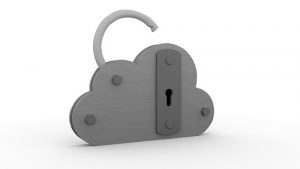
Regardless of the purpose for which you use Amazon Web Services, or AWS, you must protect your company from potential security issues. While AWS has excellent security features, consumers are still responsible for portions of their own security because Amazon can’t dictate how you use their services. Following are three ways to use AWS securely and without worry.
Watch For Strange Internal Activity
Image via Flickr by FutUndBeidl
Did you know that nearly 90 percent of occupational fraud is perpetrated by employees with no prior history of criminal or suspect behavior? The best background check in the world can’t predict future acts against your company in a previously upstanding individual, and unfortunately, security breaches sometimes happen from within.
In addition to the aforementioned background checks, pay careful attention to AWS activity. If you see numerous failed login attempts, for instance, you might have a security risk on the payroll. Other signs include unusual web activity, unauthorized software on your system, and unusual file changes.
You can also watch for behavioral indicators that could suggest an employee represents a threat. If a worker lives beyond his or her means, for instance, or talks about financial distress in the workplace, consider keeping a closer eye on him or her.
Set Google Alerts
If you want to know about potential AWS security features as quickly as possible, set a Google alert. You’ll be notified via email if content appears on the internet that pertains to your alert. For instance, you could use keywords like “AWS security,” “AWS breach,” or “AWS security flaw.”
Google alerts prove extremely useful when you work with sensitive data in the cloud. You don’t want to miss a security issue that could jeopardize your security, but you can’t monitor news and industry blogs 100 percent of the time.
In addition to Google alerts, check the AWS website regularly for updates. The service health dashboard can prove particularly useful, though you’ll also want to pay attention to the personal health dashboard. The latter will inform you of any issues that could impact your services in particular.
Know Your Own Responsibility
As mentioned above, AWS uses a shared responsibility model when it comes to security. Specifically, AWS is responsible for protecting the cloud, while the consumer is responsible for protecting data and information while in the cloud. In other words, AWS has to protect the infrastructure of the cloud, ensuring that there are no external threats to the hardware and software itself. However, you have to protect your company’s data once you’re inside the AWS space.
This includes access management for principals and employees, installed hardware and software on your end, firewall protection, and operating system stability. If you don’t know your responsibilities while participating in AWS, you can’t protect your company from fraud and other security breaches.
AWS offers numerous helpful cloud solutions, especially for businesses. While you should assess the potential security risks of AWS or any cloud service you opt to use, make sure your company takes responsibility for its own security. The more steps you take to protect your data, the safer you’ll become.